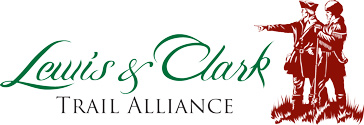Long-tailed Deer
Drawn from Nature by J. W. Audubon
On Stone by Wm. E. Hitchcock; Lithograph Printed & Colored by J. T. Bowen, Philadelphia” Original size, 8 x 4 in. Courtesy Special Collections and Archives, University of Idaho Library, SPEC QL715A9 1849.
Its gait,” wrote Bachman, “is two ambling steps and a bound exceeding double the distance of the steps, which mode it does not depart from even when closely pursued. In running, the tail is erect, wagging from side to side, and from its unusual length is the most remarkable feature about the animal.” It may have been the gait that was the basis of the common name Edward Umfreville of the Hudson’s Bay Company used in 1784—”long-tailed jumping deer.”
Clearly, J.W. Audubon learned from his father to depict animation from an undestanding of the unique anatomy of each animal, based on studies of skeletons and skulls. Through balanced ranges of color and tone, from rich browns, blacks, to subtly shaded whites, both men conveyed the tactile qualities of flesh and fur in motion.
The laborious and time-consuming process that the identification of the various species required is reflected in Bachman’s conclusion: “We have given what we consider an excellent figure by J. W. Audubon, from the original specimens, and there is now in the Academy of Sciences at Philadelphia a young male [which] was procured some years since by the late Mr. J. K. Townsend on the Columbia River.”[1]John James Audubon and James Bachman, Quadrupeds of North America, 3 vols. (Philadelphia, 1839-54), 2:332. John Kirk Townsend was born in 1809 and died in 1851. Townsend re-collected several of the … Continue reading/p>
One of the most confusing terms in Lewis and Clark’s lexicon of quadrupeds was the adjective long-tailed—or longtailed, or long tailed. In the preamble to his description of the mule deer, Lewis reported that on that day, 10 May 1805, the hunters had killed “two Mule deer” and “one common fallow or longtailed deer,” in that case implying that “common fallow” and “longtailed” were synonyms. Yet on 8 April 1806, he recorded that the “common longtailed fallow deer”—the only time he used that name—were the most abundant species along the Columbia River east of Portland, Oregon. At the Three Forks of the Missouri on 29 July 1805, he compounded the ambiguity: “we have killed no mule deer since we lay here, they are all of the longtailed red deer which appear qu[i]te as large as those of the United States,” the latter obviously a reference to the Virginia whitetail.
By mid-century, John Bachman and his partner, John James Audubon, were still ambivalent about the true identity of the long-tailed deer.
In its general appearance this Deer greatly resembles the European roebuck, and seems to be formed for bounding along in the light a graceful manner of that animal. The species has been considered of doubtful authenticity, owing to the various lengths of tail exhibited by the common deer, many specimens of which we collected near the Rocky Mountains, not differing from C. Virginianus in any other particular, but with long tail.
In fact, Bachman asserted:
LEWIS and CLARK considered it the same animal as the common deer, with the exception of the length of the tail. They found it inhabiting “the Rocky Mountains, in the neighbourhood of the Chopunnish, and about the Columbia, and down the river as low as where the tide-water commences.” These travelers in another passage observe that “the common Fallow Deer with long tails” (our present species), though very poor, are better than the black-tailed fallow deer of the coast, from which they differ materially. . . .
We have after some hesitation admitted this species, and as much has been said (although but little learned) of the western Long-tailed Deer since the days of LEWIS and CLARK, it is desirable that the species should be carefully investigated.[2]Ibid.
Some zoologists still disagree whether the long-tailed version of the common deer Lewis and Clark saw on the High Plains and in the foothills of the Rockies really is, or is not, a subspecies of the whitetail of Virginia. The splitters say yes, and call it Odocoelius virginianus dacotensis—”of Dakota,” the eastern limit of its range. The lumpers say no—or “yes, but the differences are insignificant.”
Notes
| ↑1 | John James Audubon and James Bachman, Quadrupeds of North America, 3 vols. (Philadelphia, 1839-54), 2:332. John Kirk Townsend was born in 1809 and died in 1851. Townsend re-collected several of the birds found originally by Lewis and Clark, and found several more that were new. From Fort Vancouver, in 1835, Townsend shipped hundreds of bird and animal specimens to the Academy of Natural Sciences in Philadelphia. The Academy had provided the ornithologist with a hundred dollars for his travels; today his specimens are priceless. —James Reveal |
|---|---|
| ↑2 | Ibid. |
Experience the Lewis and Clark Trail
The Lewis and Clark Trail Experience—our sister site at lewisandclark.travel—connects the world to people and places on the Lewis and Clark Trail.
Discover More
- The Lewis and Clark Expedition: Day by Day by Gary E. Moulton (University of Nebraska Press, 2018). The story in prose, 14 May 1804–23 September 1806.
- The Lewis and Clark Journals: An American Epic of Discovery (abridged) by Gary E. Moulton (University of Nebraska Press, 2003). Selected journal excerpts, 14 May 1804–23 September 1806.
- The Lewis and Clark Journals. by Gary E. Moulton (University of Nebraska Press, 1983–2001). The complete story in 13 volumes.


